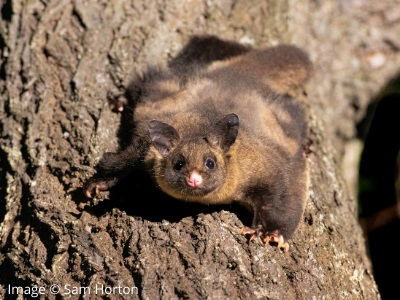
Wildlife Queensland’s Yellow-Bellied Glider Project team has had amazing recent success locating yellow-bellied glider colonies by using Audiomoth acoustic monitors to record vocalisations made by the species in the western suburbs of Logan.
This particular species of glider is the most vocal of all Australian native gliders; the use of acoustic monitors as a passive survey tool has become be an extremely effective method to track their occurrence.
To date, the team has identified five separate yellow-bellied glider colonies, including movement corridors (den tree to feed trees) within the suburb of Greenbank, Logan. The large majority of the identified yellow-bellied glider colonies are on private land, highlighting the important role the community has to play in the conservation of native species.
“It is especially important in an urban environment that local community members and landholders play an active role in the conservation of at-risk native wildlife, like the yellow-bellied glider. The Yellow-Bellied Glider Project team is doing a terrific job in engaging with landholders to promote awareness and consideration of the conservation needs of these gliders in the Logan region,” says Wildlife Queensland Projects Manager Matt Cecil.
Outside of the suburb of Greenbank, Audiomoths have been deployed at locations in North Mclean and within mature eucalypt forest around Flinders Peak, Ipswich. Spotlight surveys in the Flinders Peak area identified a population of greater gliders, however, yellow-bellied gliders were not observed. It’s hoped the acoustic survey will produce more conclusive results, given yellow-bellied gliders can be very difficult to find in spotlight surveys.
The Yellow-Bellied Glider Project team is confident that continued monitoring, over time, will identify the number of yellow-bellied glider colonies in the West Logan region, and the amount of connectivity between populations. Further, this work will assist in identifying essential habitat corridors that require protection to ensure species persistence.
For more information about the Yellow-Bellied Glider Project, head to the Queensland Glider Network web page.
